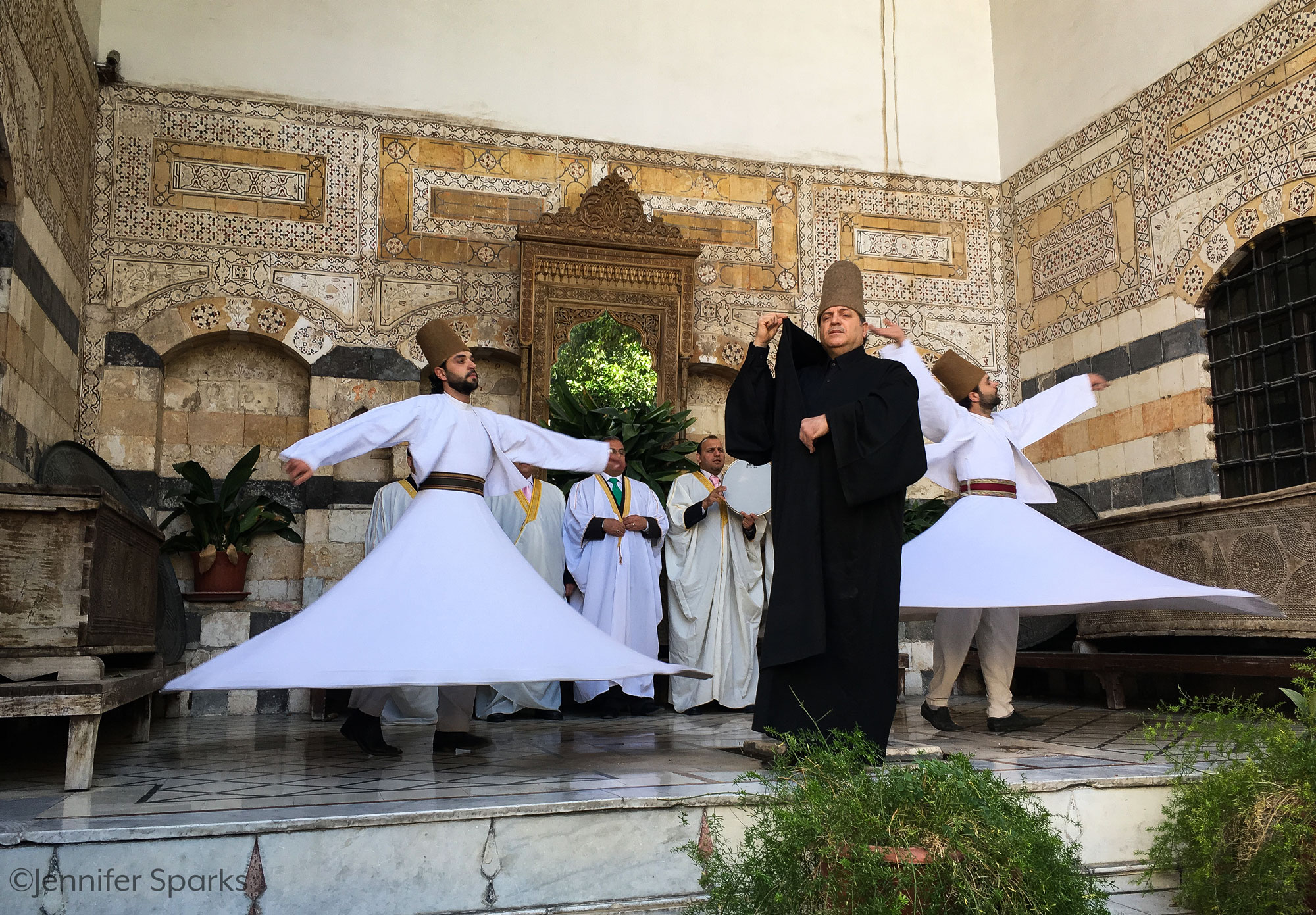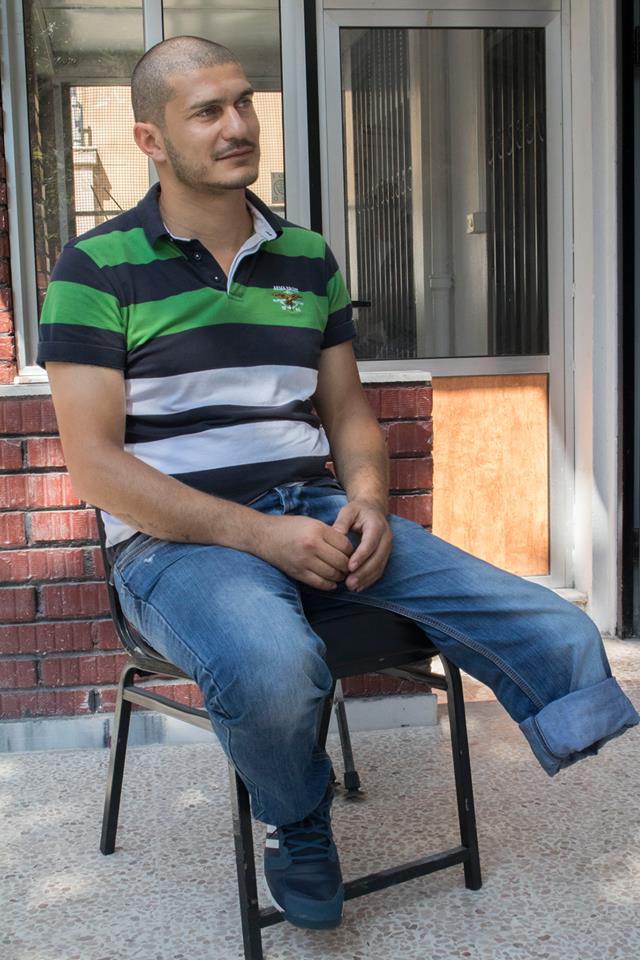Syria, a study in the surreal
I was privileged to visit Syria twice in 2016, both times as part of a team from the International Organization for Migration (IOM). This will focus on the second trip, in August, where a colleague and me were shooting the final part of a six-country documentary. We were able to travel quite a bit through the western part of the country, including Rural Damascus, Damascus, Homs, Tartus and Lattakia.
The war was in its fifth year, and the biggest movements of people had already happened. Some 6 million Syrians had fled their homeland, while another 5.5 million had been forced to seek shelter somewhere else inside their borders. That meant nearly half of the country was not in their original domicile.
The first thing that caught my attention was the complete dichotomy of daily life. Driving overland from Lebanon, we came down the mountains and into Damascus from the west. As we came into the city, we could see and hear the shells falling. People were going about their daily life, unfazed. The officers at the checkpoint were joking with each other. A man pedaled past on his bicycle with a bag of cucumbers hanging from the handles. Children in school uniforms and backpacks flooded out of school. The daily noise of a city was punctuated by explosions, and no one blinked.
I couldn’t help but think that when we heard the shells hit, I was hearing people dying. It was deeply disturbing, not only for the sound itself, but how inured the general population was after five years.
Damascus was putting on a brave face. Cell phone ads dominated billboards, and there was a lively trade happening in the markets. There were traffic jams and plenty of opportunity to find a delicious meal. Colleagues took us out for drinks at a very modern, very posh rooftop bar, where we now got to take in the sight and sound of bombings with a gin and tonic in hand. Death with a view. Surreal.




One of the families we visited in Damascus had been displaced during the conflict. IOM was running a program to provide hearing aids to people who needed devices but were unable to access them, either because of financial obstacles or due to lack of supply. When Mohammed was 3 ½ years old and still not speaking, his mother Amani suspected he was not able to hear. Deafness runs in the family—her brother is also unable to hear.
Mohammed and his mother Amani have a moment together in the front garden of their family’s temporary home in Damascus.
With the family struggling to make ends meet in their new neighborhood, Amani was unable to afford help for Mohammed. She heard about the hearing aid program and took Mohammed to get a hearing aid.
“I noticed an immediate difference when I put the hearing aid on him for the first time,” Amani explained. Mohammed would respond when his name was called. He started running to answer the phone when it rang. “He started talking—his favorite word is ‘Laila’, which is his sister’s name,” says Amani. Being just 5 years old when we met him, Mohammed was going to be able to begin school with his age-mates with the help of the hearing aids.
A couple days later, after spending a couple days filming in Rural Damascus (a province just to the south of the capital), we headed north to Homs.
On the way, we stopped in Maaloula, home to a famous Christian Monastery, in a community where Aramaic is still commonly used. It had been taken over by ISIS and used as a sniper position as it overlooks the city. The director of the church and monastery told us of his heartbreak as the church was looted and ancient art put on the black market. “I saw it for sale on Facebook,” he said. “I took down all of the chandeliers so they would be protected from the bombs. They’re the only part of the church’s decor left intact.”
Entering Homs from the south, a visitor would never know that this is where a revolution began. The buildings are new, with students coming to and from the Baath University. Taxis wait out front, and it is all very civilized looking. Literally across an intersection, the war begins. Buildings are flattened to a degree that makes it impossible to imagine anyone surviving. Every surface seems pockmarked with bullet holes, and aggressive checkpoints are set up. Electricity is infrequent, making the hot summer days a misery.
We have dinner in the midst of the rubble. There’s a shockingly well stocked restaurant running just by the ruins of the Orthodox church. The table is smothered in mezze, the air perfumed by shisha smoke. Dinner is delicious, though hard to see at times as the lights cut on and off. A group of men from the church come in. So does a family with a little boy who keeps making a run for the door. The parents chase him down quickly. The streets aren’t safe.
At the hotel, people are lounging around the pool though it is close to midnight. We hear explosions in the distance that seem to be coming closer. Nobody moves from the pool. The music continues to play. Children keep swimming. The sounds of destruction finally fade.
In Homs, we visit another project being run by IOM. This time, it is a prosthetic limbs workshop, which aimed to employ locals, teach skills, and provide a service to people who had lost limbs during the violence. One of the people IOM was assisting was named Zakhour.
Before the crisis began, Zakhour was a driver for tourists in Syria, taking them to the then-intact historical site of Palmyra and to other places around Homs.
Once the conflict began, life changed for everyone including Zakhour. He lost part of his leg after being shot in 2014.
"I was conscious all the way to the hospital. I kept saying to myself, Zakhour, it's just your leg. At least you're alive. I didn't want anyone to treat me differently because of my injury. I knew I had two choices--I could either lay there and feel sorry for myself, or I could keep going. So I chose to keep going."
Zakhour was in the process of being fitted for a prosthetic leg.
Not wanting to stop driving, and to avoid being a burden on his young wife who he had just found out was pregnant, Zakhour made himself a special stick to substitute for his leg which he used to deploy the clutch of his car.
"I drive myself anywhere I need to go. I drive my daughter to the park. She's the light of my life! My wife is pregnant again--she wants a boy, but I want another girl. I want to work now as much as I can, because I know I won't be able to work hard forever with this injury."
On the coast, Tartus is a sleepy beach town, largely unaffected by the conflict. The only thing that has changed is there are more residents than before, as people have sought out the area for its stability. Prices have gone up, and housing is now a bit tighter. Beyond that, you would never know there was a war raging.
After several days of being on high alert, colleagues take us for a live music performance and drinks on the beach. We go to a nightclub. My mind struggles to reconcile that the night before I was on the phone with my travel companion, who is now dancing, as we conferred about whether we needed or not we needed to take shelter from the bombings.
Summer of 2015 saw the tremendously ill-advised #summerinsyria campaign sponsored by the government to show how great things were in Syria. It started out with rich kids showing off their clubbing schedule and looking very Euro-chic. It was eventually taken over by people showing the realities of their summer with no water, electricity, or sometimes walls to their homes.
When we arrived a year later, we got an up close and personal view of how the elite who hadn’t left Syria could feel like life was largely unchanged, just slightly inconvenienced. They lacked for little. At the same time, the eastern part of the country was very much under ISIL control, there were thousands of named armed groups operating in the country, and Aleppo was being decimated in some of the most intense bombardments of the conflict.
Now in year eight of a bloody, devastating conflict, cities remain ruined and over 11 million people are still displaced from their homes. It’s a mind boggling number made up of individuals. Individual heartbreaks, shattered dreams, losses and pain. Individual stories of resilience, strength, tenacity and heroism.
It is people like Amani, Mohammed and Zakhour who have stayed and are managing to carry on who continue to be on the front lines of war, and who will be on the front lines of rebuilding.















